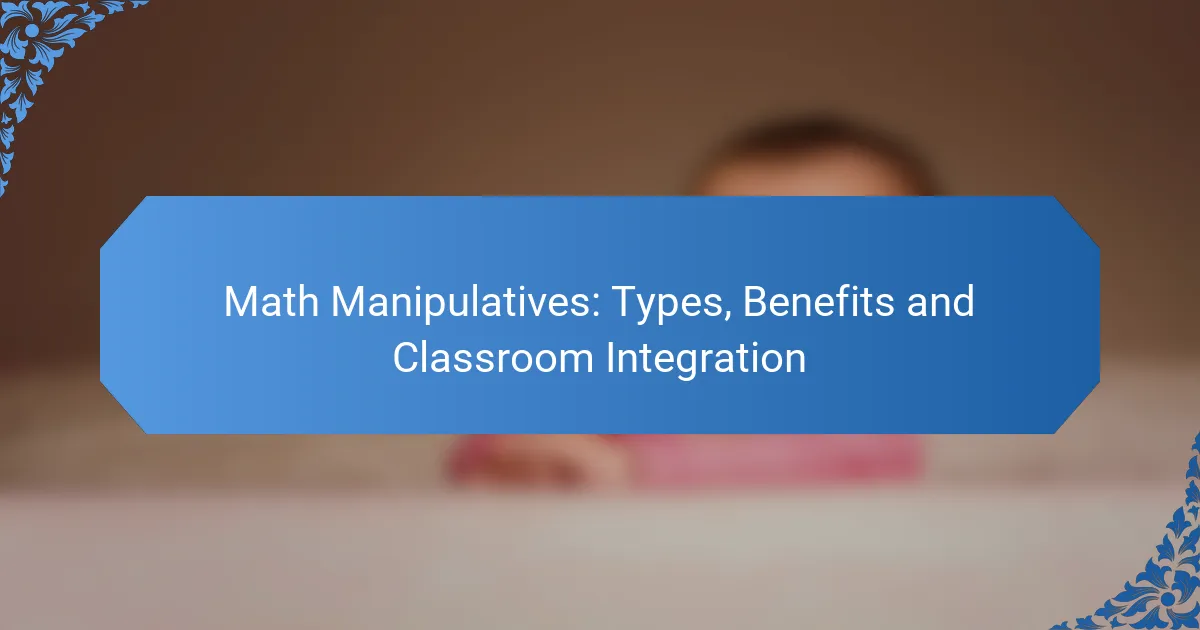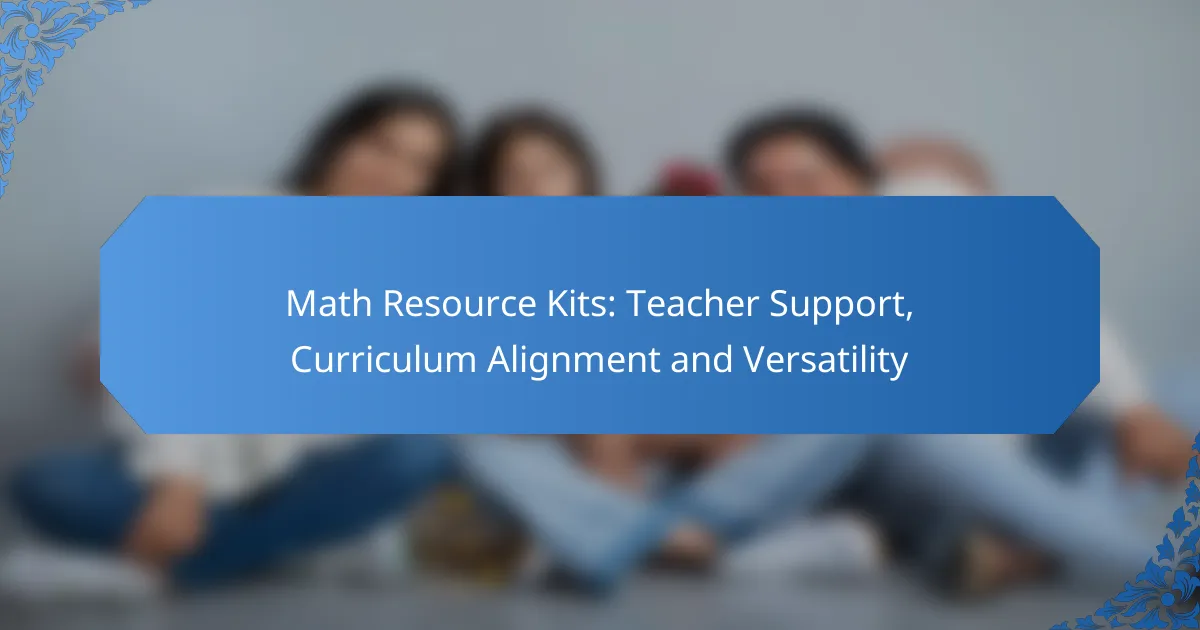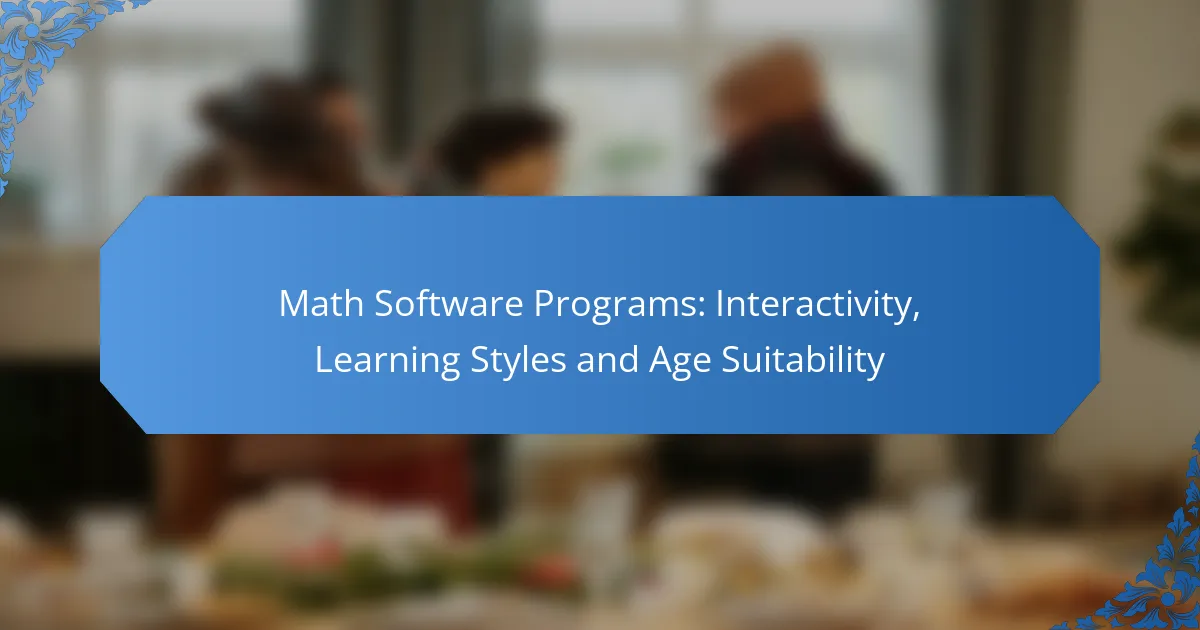Math manipulatives are essential tools that provide students with hands-on experiences to grasp mathematical concepts more effectively. By categorizing these tools and understanding their unique benefits, educators can enhance student engagement and support diverse learning styles in the classroom. Integrating manipulatives into teaching strategies fosters a deeper comprehension and retention of abstract ideas, making math more accessible and enjoyable for all learners.
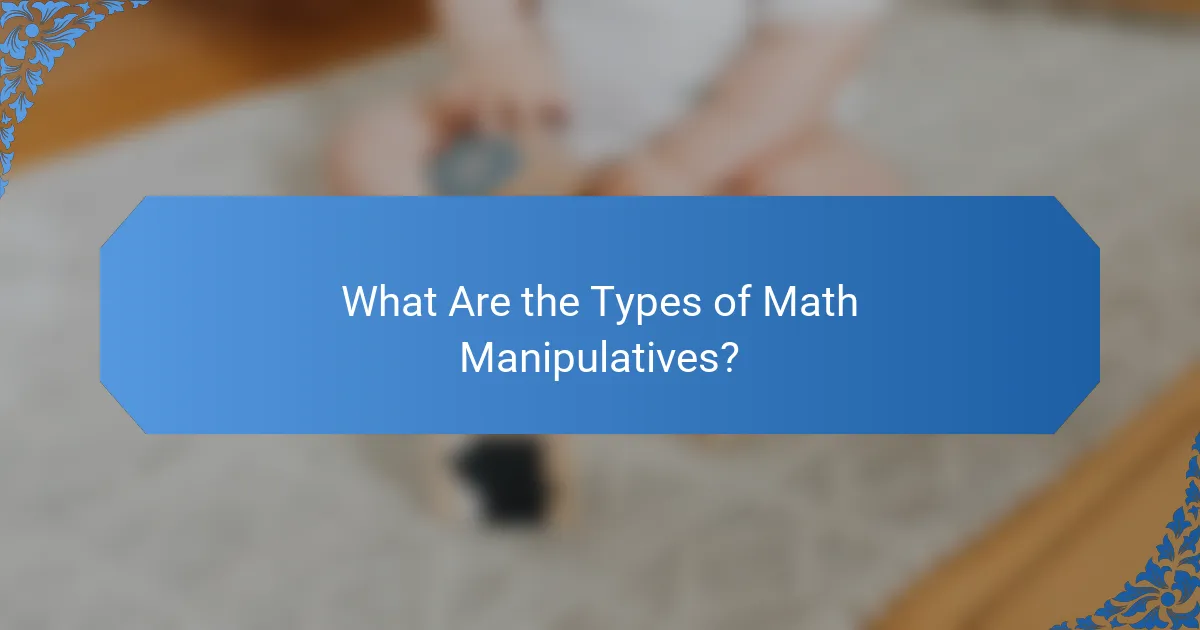
What Are the Types of Math Manipulatives?
Math manipulatives are physical or digital tools that help students understand mathematical concepts through hands-on experience. They can be categorized into several types, each offering unique benefits for learning and teaching mathematics.
Concrete manipulatives
Concrete manipulatives are tangible objects that students can physically handle to learn math concepts. Examples include blocks, counters, and measuring tools. These manipulatives allow learners to visualize and physically manipulate numbers and operations, making abstract concepts more accessible.
When using concrete manipulatives, it’s essential to choose items that are age-appropriate and relevant to the mathematical concepts being taught. For instance, younger students may benefit from using counting bears, while older students might use algebra tiles for solving equations.
Visual manipulatives
Visual manipulatives are tools that provide a visual representation of mathematical ideas without being physically handled. Examples include number lines, charts, and graphs. They help students see relationships and patterns in numbers, which can enhance their understanding of mathematical operations.
Incorporating visual manipulatives into lessons can be effective for visual learners. Teachers should ensure that these tools are clearly labeled and easy to interpret, allowing students to draw connections between visual representations and numerical concepts.
Digital manipulatives
Digital manipulatives are software-based tools that simulate physical manipulatives or provide interactive math experiences. Examples include online math games, apps, and virtual manipulatives like digital base ten blocks. These tools can engage students and offer immediate feedback, which can be beneficial for learning.
When integrating digital manipulatives, it’s important to select platforms that align with educational standards and provide meaningful learning experiences. Teachers should also consider the accessibility of technology for all students, ensuring that everyone can benefit from these resources.
Abstract manipulatives
Abstract manipulatives involve symbols and numbers that represent mathematical concepts without physical form. Examples include equations, graphs, and mathematical notation. These manipulatives are often used in higher-level math to develop critical thinking and problem-solving skills.
To effectively teach with abstract manipulatives, educators should gradually introduce these concepts after students have built a solid foundation with concrete and visual manipulatives. This approach helps students transition from hands-on learning to more abstract reasoning.
Common examples
Common examples of math manipulatives include a variety of tools suited for different learning stages. For concrete manipulatives, items like base ten blocks and fraction circles are popular. Visual manipulatives often include pie charts and bar graphs, while digital manipulatives can range from interactive math software to educational apps.
In the classroom, teachers can create a balanced approach by using a combination of these manipulatives. This strategy caters to diverse learning styles and helps reinforce mathematical concepts through multiple representations, enhancing overall comprehension and retention.

What Are the Benefits of Using Math Manipulatives?
Math manipulatives offer numerous benefits, including enhanced understanding of mathematical concepts, increased student engagement, and support for various learning styles. These tools help students visualize and physically interact with abstract ideas, leading to deeper comprehension and retention.
Enhances conceptual understanding
Using math manipulatives allows students to explore mathematical concepts in a tangible way. For example, blocks can represent numbers, helping learners grasp addition and subtraction through physical grouping. This hands-on experience fosters a more profound understanding of mathematical principles compared to traditional methods.
Additionally, manipulatives can bridge gaps in knowledge by providing visual representations of complex ideas, such as fractions or geometry. When students manipulate objects, they can see relationships and patterns that enhance their conceptual framework.
Improves engagement
Math manipulatives significantly boost student engagement by making learning interactive and enjoyable. When students can touch and move objects, they are more likely to participate actively in lessons. This engagement can lead to increased motivation and a willingness to tackle challenging problems.
Incorporating games or collaborative activities with manipulatives can further enhance interest. For instance, using dice or cards in math games encourages friendly competition while reinforcing skills, making the learning process more dynamic.
Supports diverse learning styles
Math manipulatives cater to various learning styles, ensuring that all students can benefit from the instruction. Visual learners thrive with tools that provide concrete representations, while kinesthetic learners gain from the hands-on experience of manipulating objects. Auditory learners can also benefit when discussions about the manipulatives are integrated into the lesson.
Teachers can easily adapt lessons to include different manipulatives, such as counters, number lines, or geometric shapes, to meet the needs of their students. This flexibility allows for a more inclusive classroom environment where every learner can succeed.
Facilitates problem-solving skills
Manipulatives help students develop problem-solving skills by encouraging exploration and experimentation. When faced with a math problem, students can use physical objects to test different strategies and see immediate results. This trial-and-error approach promotes critical thinking and resilience.
Moreover, manipulatives can be used to model real-world problems, allowing students to apply their mathematical understanding in practical contexts. For example, using measuring tools in a cooking project can illustrate ratios and proportions, reinforcing problem-solving skills in everyday situations.
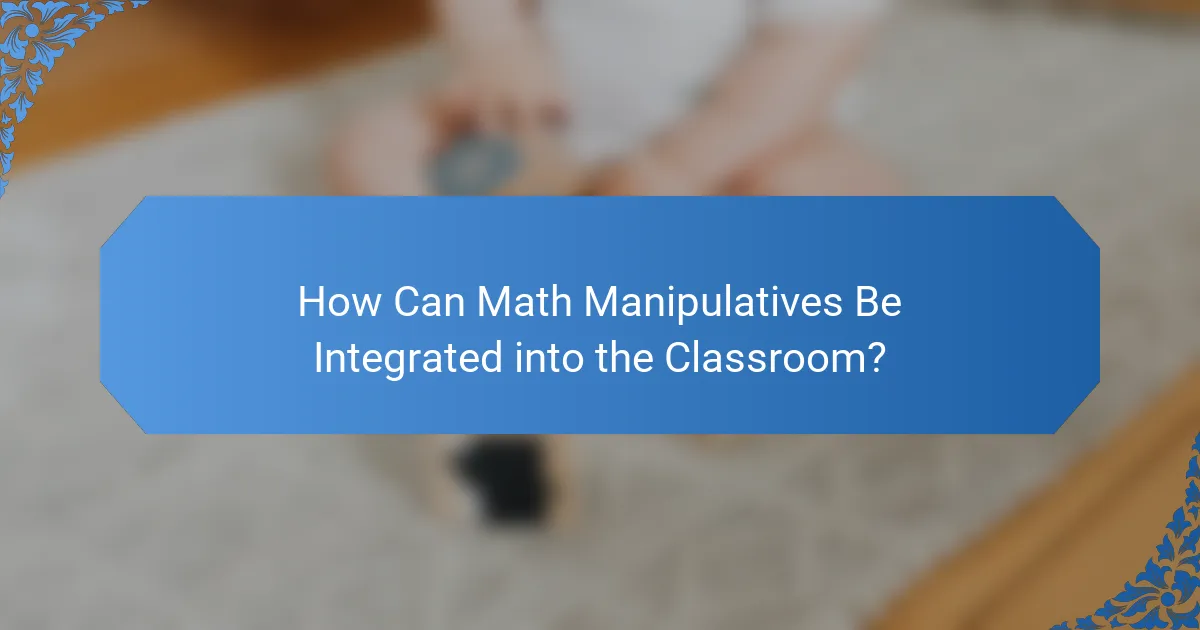
How Can Math Manipulatives Be Integrated into the Classroom?
Integrating math manipulatives into the classroom enhances student engagement and understanding of mathematical concepts. These hands-on tools can be seamlessly incorporated into various teaching strategies to support diverse learning styles.
Incorporating into lesson plans
To effectively incorporate math manipulatives into lesson plans, start by identifying the key concepts you want students to grasp. Choose manipulatives that align with these concepts, such as base ten blocks for place value or fraction tiles for understanding fractions. Ensure that the use of these tools is clearly outlined in your lesson objectives.
For example, when teaching addition, you might plan a lesson where students use counters to visualize and solve addition problems. This approach not only reinforces the concept but also allows for immediate feedback and correction.
Using during group activities
Group activities provide an excellent opportunity to utilize math manipulatives collaboratively. Assign small groups to work with specific tools, encouraging discussion and problem-solving as they manipulate the objects. This interaction fosters communication skills and deepens understanding through peer learning.
Consider a station rotation model where each group rotates through different activities involving manipulatives. For instance, one group could use geometric shapes to create patterns, while another uses measuring tools to explore area and perimeter. This variety keeps students engaged and allows for practical application of concepts.
Assessment strategies
When assessing students’ understanding of mathematical concepts with manipulatives, consider both formative and summative assessments. Use manipulatives during informal assessments, such as observations or quick checks, to gauge student comprehension in real-time.
For formal assessments, you might include tasks where students demonstrate their understanding by using manipulatives to solve problems or explain their reasoning. This method not only evaluates their knowledge but also their ability to articulate mathematical thinking.
Professional development for teachers
Professional development for teachers is crucial in effectively integrating math manipulatives into the classroom. Workshops and training sessions can provide educators with strategies for selecting appropriate tools and implementing them in lessons. Collaboration with peers can also enhance understanding and share best practices.
Encourage participation in ongoing training that focuses on the latest research in math education and the use of manipulatives. Resources such as online courses or local education conferences can help teachers stay informed and inspired to incorporate these tools effectively.
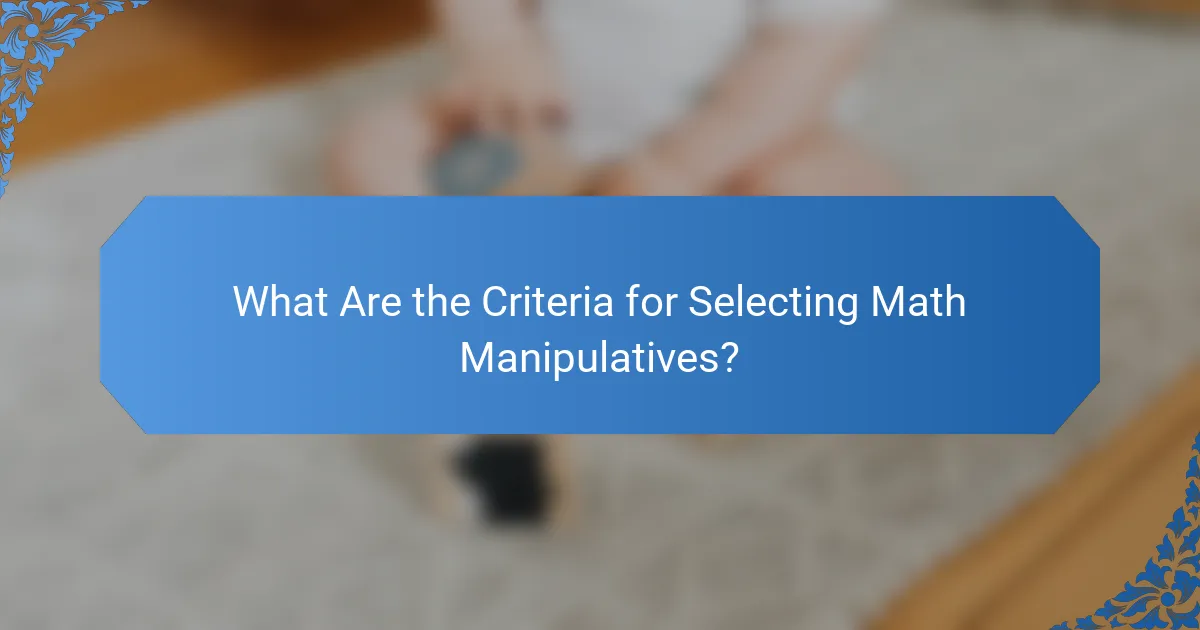
What Are the Criteria for Selecting Math Manipulatives?
Selecting math manipulatives involves evaluating their alignment with educational standards, suitability for the intended age group, and overall cost-effectiveness. These criteria ensure that the tools enhance learning while being practical for classroom use.
Alignment with curriculum standards
Math manipulatives should support the specific curriculum standards set by educational authorities. This alignment ensures that the manipulatives reinforce the concepts being taught and help students meet learning objectives.
For example, if a curriculum emphasizes problem-solving skills in geometry, manipulatives like geometric shapes or pattern blocks can be particularly effective. Always check local or national standards to ensure compliance.
Age appropriateness
Choosing manipulatives that are suitable for the students’ age is crucial for effective learning. Younger students may benefit from tactile, colorful objects, while older students might require more abstract tools that promote critical thinking.
For instance, preschoolers might engage better with large foam numbers, while middle school students may find algebra tiles more beneficial. Assess the developmental stage of your students to select the right tools.
Cost-effectiveness
Cost-effectiveness is an important consideration when selecting math manipulatives. Schools often operate under tight budgets, so finding affordable options that do not compromise quality is essential.
Consider bulk purchasing or reusable manipulatives to maximize value. For example, a set of base-ten blocks can be used across multiple grades, making them a smart investment. Always compare prices and look for discounts to ensure you stay within budget.

How Do Math Manipulatives Support Different Learning Styles?
Math manipulatives enhance learning by catering to various styles, allowing students to grasp concepts through hands-on experience, visual representation, and physical interaction. These tools can significantly improve understanding and retention for learners with diverse preferences.
Visual learners
Visual learners benefit from math manipulatives that provide clear, graphical representations of concepts. Tools such as colored blocks, charts, and diagrams help these students visualize relationships and patterns, making abstract ideas more tangible.
Incorporating visual aids like number lines or fraction circles can enhance comprehension. For instance, using a pie chart to demonstrate fractions allows visual learners to see the whole and its parts, reinforcing their understanding of division and ratios.
Kinesthetic learners
Kinesthetic learners thrive on hands-on activities, making math manipulatives essential for their education. These students engage best when they can physically manipulate objects, such as counting beads or geometric shapes, to explore mathematical concepts actively.
To support kinesthetic learners, teachers can incorporate activities like building models or using interactive games. For example, using physical tiles to create patterns or solve equations allows these learners to connect movement with learning, enhancing their grasp of mathematical principles.
